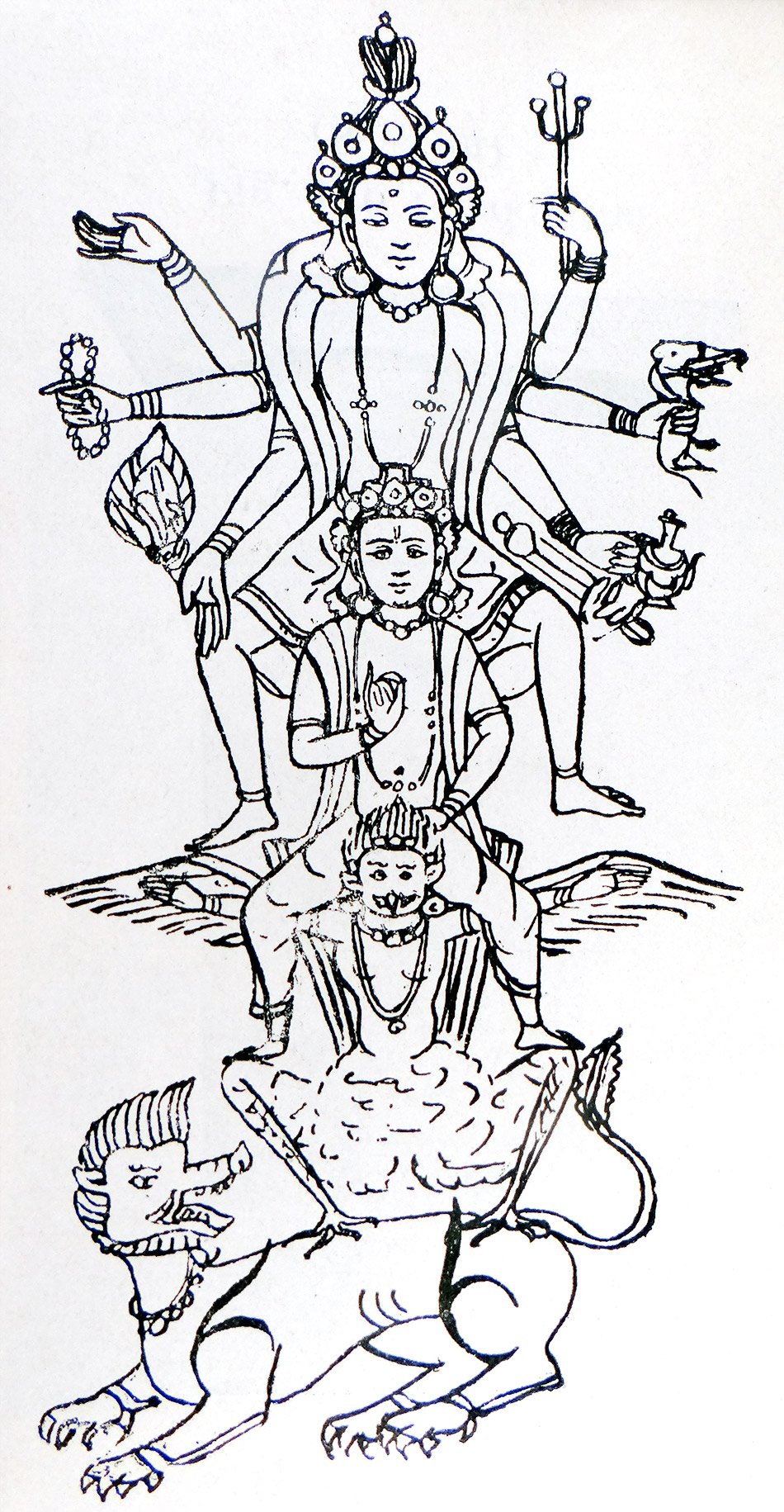The Indian Buddhist Iconography
by Benoytosh Bhattachacharyya | 1958 | 51,392 words | ISBN-10: 8173053138 | ISBN-13: 9788173053139
This page contains an iconography image of (Avalokiteshvara): Harihariharivahana and represents figure 113 of the book Indian Buddhist Iconography, based on extracts of the Sadhanamala English translation. These plates and illustrations represent either photographs of sculptures or line-drawing reproductions of paintings or other representations of Buddhist artwork.
Figure 113 - (Avalokiteśvara): Harihariharivāhana

Figure 113: Harihariharivāhana
The composition of the deity is so queer that great difficulty is experienced in recognizing the images of this form of Avalokiteśvara, called by the peculiar name of Harihariharivāhana. The Sādhana gives a description of the god, but is practically silent as to why such a special name is given to this particular variety of Lokeśvara. India has not given uptil now any image of Harihariharivāhana and it is rare even in Nepal. There is only one sculpture at Svayambhūkṣetra and a bronze in one of the monasteries at Pattan, and both of them follow the Sādhana faithfully. The lion is lowermost, on it rides Garuḍa. On the back of Garuḍa, again, rides the Hindu god Viṣṇu with the four symbols, the conch, the discus, the mace and the lotus. On the shoulder of Viṣṇu rides Lokeśvara. The lion, the Garuḍa and the god Viṣṇu, all have ‘Hari’ as their synonym and because the vehicle of Lokeśvara is composed of three Hari’s, the principal god acquires the name of Harihariharivāhana. Two Sādhanas in the Sādhanamālā are devoted to the worship of this form of Ārya Avalokiteśvara and the Dhyāna in one of them describes the god.
In the drawing of Harihariharivāhana illustrated in the Appendix there is a snake below the lion. The snake also has the synonym of ‘Hari’ in Sanskrit, and that is how a snake is added, although it is not required by the Sādhana. Fig. 113 is a Nepalese drawing of the god and here instead of the deer-skin in one of the left hands, an actual elephant is seen. In other respects the drawing represents the principal god in all details. This deity is also known in China.
